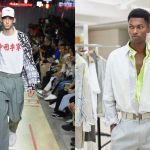
Hermès and Li-Ning are the only brands to have gained value during the pandemic
Share price is rising: two different strategies with China in common
July 27th, 2020
In one of the first days after reopening in May, Hermès' boutique in Guangzhou, China, grossed a total of 2.7 million dollars - an astronomical figure even for a Chinese luxury store. The news made the rounds around the world inflaming the debate about the pandemic's impact on fashion luxury: many analysts argued that it was an isolated case, while the most optimistic cited the episode to show how the industry was holding on. Two months after that episode and countless news and data on revenue and sales declines, Vogue Business published financial data on the value of stocks that clarify which brands defeated the lockdown and with what strategies.
Hermès and Chinese sportswear brand Li Ning are both trading above their value before the Covid-19 pandemic. Between January and July 2020, the value of Hermès shares rose 13% on the Paris Stock Exchange, while Li-Ning gained 8% on the Hong Kong market. Shares in the two large rival groups LVMH and Kering fell 9% and 14% over the same period, while Nike lost 4%. Only 8 of the top 55 listed luxury companies, according to a Deloitte report, have seen their share price rise this year, with Hermès rising at a double-digit rate.
The reasons why only these two brands have seen an increase in the value of their shares are different. Both brands operate in sectors that have been affected relatively by the crisis: non-seasonal luxury for Hermès and activewear (in a market as large as the Chinese one) for Li-Ning. The common point between the two brands is exactly the centrality of the Chinese consumer in their strategies that are different but both winning.
The "Silent Luxury" of Hermès
During the pandemic, most luxury fashion brands reported a double-digit drop in the first quarter (the most resounding case was Burberry with over 48%), Hermès recorded only a 7.7% drop in sales (well below a consensus forecast of -13% according to a Morgan Stanley report). The reason for this disparity of results lies in the non-seasonal nature of Hermès' products and the perception of the French brand, considered - according to the recent results of the Vogue Business Index - by Chinese consumers as an emblem of the status of luxury precisely because it is unrelated to the logo-centric fashion system, collabo and capsules focused on Gen-Z.
This is what McKinsey called in a report "Silent Luxury" that is the return of a luxury that makes its cornerstones of calmness and elegance. Another element that helped to contain the decline in sales caused by the lockdown was the digital sales strategy focused on the Chinese market, where consumers are much more inclined to buy online even in the case of luxury products. A strategy that in the long run seems to be guessed as analysts seem to agree that by 2025 50% of luxury sales will come from the Chinese market.
Li-Ning's streetwear nationalism
Li-Ning's growth during the lockdown is more surprising than Hermés's for the simple fact that the Chinese brand does not sell luxury goods, its intangible assets (logo and reputation) are incomparably inferior to those of the French. A fact that becomes even more important when compared with the direct competitors of the brand who have all lost value, including Puma, Nike and adidas. Li-Ning's success is based on two elements: the first is the capillarity of its stores, more than seven thousand scattered throughout mainland China, the second has to do with politics and the rise of Chinese nationalism.
The brand founded in 1989 by former Olympic gold medalist Li Ning has only boomed in the last five years, when the Beijing government allocated funds and started an extensive media campaign to rehabilitate the "Made in China" associated with fake and low-end products. The same kind of government support both economically and politically has been given in the technology sectors to Huawei and Xiaomi and to the media sector to ByteDance, the company that owns Tik Tok. Li-Ning quickly became the reference brand for activewear and sportswear with a very rapid growth that has already led her to dress athletes in the NBA, the Chinese national gymnastics artistic and also to show at Paris Fashion Week. Today the brand is the leader in the Chinese market, in which many analysts have predicted that sports products became increasingly in demand by the Chinese consumer.
The Chinese government has decided to use fashion to fight a wider political battle, brands are organizing accordingly and what we will see in the coming years - barring sudden geopolitical changes - is a different Chinese market from the European one, on which brands will launch different products, they will practice different prices also harmonizing the communication to the consumer market (and censorship) of China.






























































































